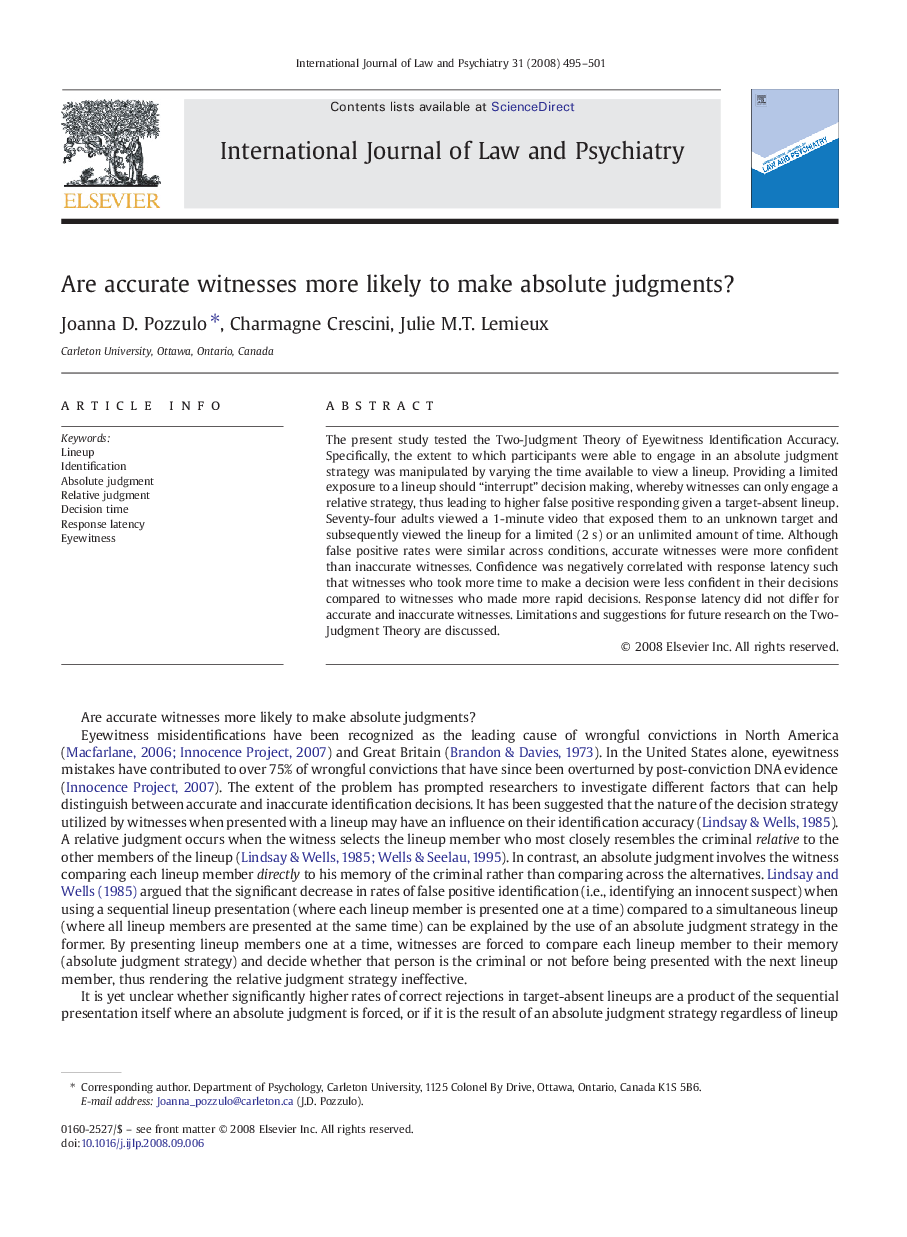| Article ID | Journal | Published Year | Pages | File Type |
|---|---|---|---|---|
| 101043 | International Journal of Law and Psychiatry | 2008 | 7 Pages |
The present study tested the Two-Judgment Theory of Eyewitness Identification Accuracy. Specifically, the extent to which participants were able to engage in an absolute judgment strategy was manipulated by varying the time available to view a lineup. Providing a limited exposure to a lineup should “interrupt” decision making, whereby witnesses can only engage a relative strategy, thus leading to higher false positive responding given a target-absent lineup. Seventy-four adults viewed a 1-minute video that exposed them to an unknown target and subsequently viewed the lineup for a limited (2 s) or an unlimited amount of time. Although false positive rates were similar across conditions, accurate witnesses were more confident than inaccurate witnesses. Confidence was negatively correlated with response latency such that witnesses who took more time to make a decision were less confident in their decisions compared to witnesses who made more rapid decisions. Response latency did not differ for accurate and inaccurate witnesses. Limitations and suggestions for future research on the Two-Judgment Theory are discussed.
